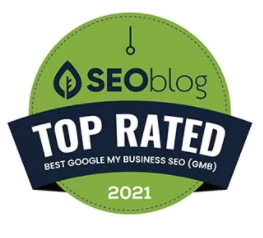If your business primarily serves a market which is local in nature, then your content marketing strategy should be focused on creating and promoting relevant content that achieves your online marketing goals with customers in your area.
Your local online marketing strategy should, therefore, include material which promotes your business by engaging users through videos, articles of interest, and social media posts which have value to your readers. Generally speaking, your content marketing should emphasize long-term campaign goals, as opposed to short-term gains.
Set clear, specific, measurable goals
There are many goals you can set when it comes to your content marketing efforts. The key to all of them is to make them concrete and not vague.
The key to all of them is to make them concrete and not vague. Let’s explore 5 of the common local content strategy goals.
1. SEO
Yes! You can set SEO goals for your content. That’s because SEO and content marketing are linked. You can’t have SEO without content, and nobody will see your content without effective SEO strategy and tactics.
Common SEO goals might be to increase the number of backlinks, or to increase your rankings in Google search results for searchers near your business by improving your content with additional relevant keywords, adding images, and adding video.
2. Lead Generation
The ultimate goal of content marketing for small businesses is to get more customers. In local content marketing, you need to attract more visitors to your website, which is the first step in generating leads who will potentially convert into sales to become customers.
Acquiring these leads is critical for gaining new customers and growing your business. Don’t set “more leads” as a goal. You can’t measure that. Instead, be clear and specific. How many more leads than last quarter do you want to generate with your content?
3. Branding
Another common goal for your content might be increasing brand recognition in your area. Do people know your brand and what you do? Again make sure your branding goals are measurable and not vague.
Also, decide what metrics you will use. What tactics will you use to achieve your goals? Will it involve customer-generated content like positive reviews of your business or social media posts?
4. Engagement
In many ways, social media engagement is the new word-of-mouth. Plus, social media is one of the best ways you can communicate with your customers and build relationships with local influencers.
Set goals around increasing things like comments, likes, and shares on social media, but don’t forget to set engagement goals for blog posts on your website too. And remember, that comments on your blog aren’t the same as leads generated there in the form of subscriptions to your email newsletter or blog posts via email.
5. Retention
Almost every business, regardless of size, has a slow season or a time of year when they commonly lose customers. Some people refer to this phenomena as churn.
The opposite of churn is customer retention and you can set goals to improve customer retention as well as create content to help you delight existing customers.
You might even turn some of them into loyal cheerleaders and brand ambassadors who will share your content with everyone they know.
Identify your local audience
It’s worthwhile to take the time to research and identify your local target audience. Before you can make any kind of relevant content for your audience, you need to have a clear idea of who they are and what their interests are.

To accomplish this, you can do things that include asking your existing customers and your employees about common problems they rely on your business to solve, questions they have related to your industry, and what kinds of information they’re interested in that’s related to what you do.
You can ask people directly or use an online survey tool to create a short survey that customers can fill out.
You can also learn the kinds of content they appreciate by analyzing website pages they visited, as well as how long they’ve spent on each of those pages.
In addition, you can use information from customer reviews, customer interviews, and recorded sales calls to discover who your customers are and create content that addresses their needs.
Produce local content ideas
When you’re generating content for a local audience, it has to be relevant to them, and it has to be useful. One way of coming up with ideas is to see what your competitors are talking about, especially any high ranking websites or blogs produced by your rivals. Pay attention to where their content appears in search results and how popular it is with visitors to their website and social media profiles.
Additionally, your knowledge of the local area should be exploited thoroughly to attract visitors to your website and your business. Use any special knowledge you have of the local area, to make your business look unique and appealing to potential customers.
Develop a content publishing schedule
It’s not the quantity of content you publish on your small business website, but the quality of content you publish. However, it is important to be consistent. Use a calendar to schedule and organize your content.
Again, it’s not how often you post a new blog or video on your site, but that you do your best to stay on schedule whatever that is. You might choose to post once a month, twice a month, or 1 or more times a week. Just make sure you choose a frequency you can keep up with.
Promote Your Content
Once you’ve identified your content goals, and published your blog post, it’s time to get it in front of as many potential customers as possible. When it comes to promoting your content, you have a wealth of options.
Here are 3 ideas to try:
1. Social Media
While Facebook made it more challenging for business pages to show up organically in consumers’ news feeds, it’s not impossible. Focus on inviting discussion of the content you post without sounding promotional.
Of course, Facebook isn’t the only social channel, and depending on where your customers spend time online, you may want to promote your content on sites like Twitter, Instagram, or LinkedIn. The main thing to remember is to focus on social media outlooks where your customers are now.
2. Email
Don’t spam your customers. However, you can encourage your customers to opt in to receiving content via email or to sign up for a monthly or weekly newsletter with summaries and links to content on your website.
Email marketing has been around for a long time, and it’s still around today because it works both to promote content and reach more customers.
3. Paid Media
While Google Ads aren’t the best choice for content promotion, Facebook Ads and boosted posts on Facebook are. Different from organic social media marketing, advertising on Facebook, Twitter, or another social media outlet allows you to target specific audiences.
Facebook has some of the most powerful targeting around and advertising on the platform doesn’t require a large budget.
Conclusion
The chief aim of local content marketing should be to drive traffic to your website and/or visits to your establishment. In order to accomplish this, make sure you set clear and measurable goals, identify your target audience, produce content your customers are interested in, stick to a consistent schedule, and promote your content online. Questions about the cost of local SEO? Contact us for details!
While there are many elements to devising and following a local content marketing strategy, having one will help you ensure your small business continues to grow.
What do you think?
Does your local business have a content marketing strategy? How do you approach content? Let us know in the comments section below and don’t forget to subscribe to our blog to have tips like these delivered straight to your inbox.









